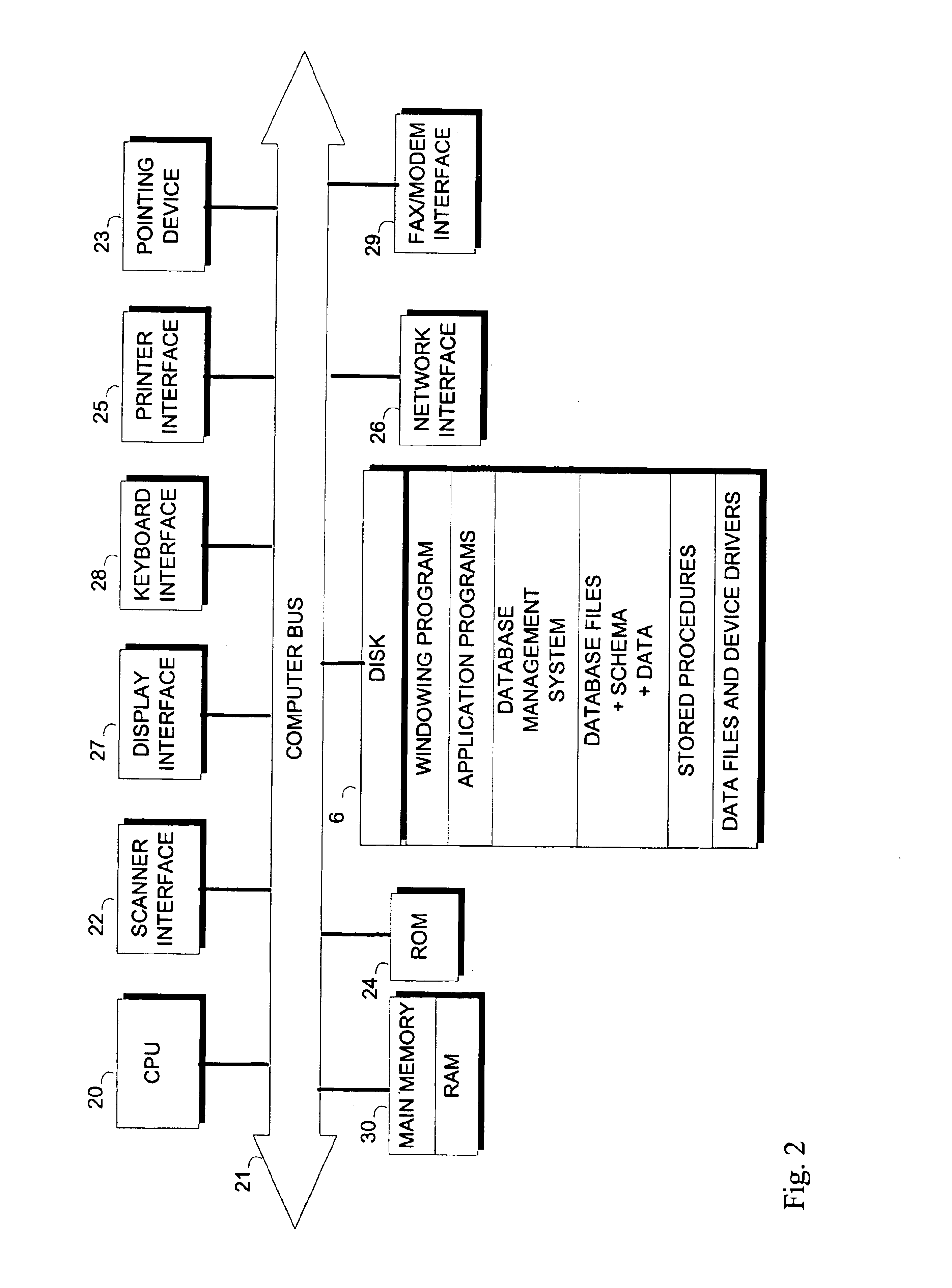Data indexing using bit vectors
- Summary
- Abstract
- Description
- Claims
- Application Information
AI Technical Summary
Benefits of technology
Problems solved by technology
Method used
Image
Examples
Embodiment Construction
FIG. 1 is an outward view of representative computing hardware embodying the present invention. Shown in FIG. 1 are computer 10 executing an operating system, display monitor 11 for displaying text and images to a user, keyboard 14 for entering text and commands into computer 10, and mouse 12 for manipulating and for selecting objects displayed on display monitor 11, or for output to an output device such as printer 16. Also included with computer 10 are fixed disk drive 6, in which are stored application programs, such as a DBMS and other applications, data files, and device drivers for controlling peripheral devices attached to computer 10, floppy disk drive 15 for use in reading data from and writing data to floppy disks inserted therein. Data and / or applications may also be accessed from a CD-ROM via a CD-ROM drive (not shown) or over a network to which computer 10 may be connected (network connection not shown).
FIG. 2 is a block diagram of the internal architecture of computer ...
PUM
 Login to View More
Login to View More Abstract
Description
Claims
Application Information
 Login to View More
Login to View More - R&D
- Intellectual Property
- Life Sciences
- Materials
- Tech Scout
- Unparalleled Data Quality
- Higher Quality Content
- 60% Fewer Hallucinations
Browse by: Latest US Patents, China's latest patents, Technical Efficacy Thesaurus, Application Domain, Technology Topic, Popular Technical Reports.
© 2025 PatSnap. All rights reserved.Legal|Privacy policy|Modern Slavery Act Transparency Statement|Sitemap|About US| Contact US: help@patsnap.com



